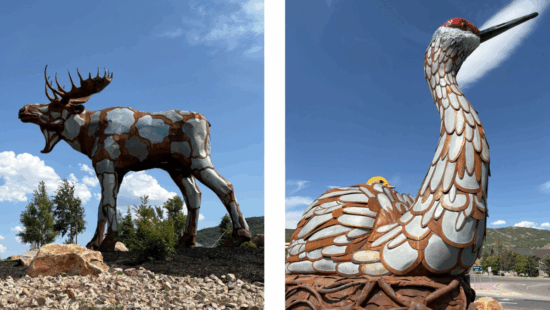Environment
Wonder and worry collide at Utah’s famed Bonneville Salt Flats

Utah Salt Flats between Salt Lake City and Wendover. Photo: Sandra Seitamaa
SALT LAKE CITY — The Bonneville Salt Flats sit just off of a highway in a state nowhere near the ocean, but parts of the tourist attraction glimmer as white as a Caribbean beach, attracting influencers and people with cameras from all over.
Truck drivers, selfie-stick-wielding tourists, and gamblers driving to the casinos of West Wendover, Nevada, are known to stop here to photograph the stark white landscape with canals of flowing water. The water’s color appears turquoise because it’s been dyed by a mining company that channels brine to ponds, where it evaporates and leaves behind valuable minerals.
In the American West — a region with no shortage of other-worldly landscapes — this crystalline expanse near the Utah-Nevada line is an awe-striking natural wonder. The area is what’s leftover from Lake Bonneville, a prehistoric body of water that filled after an Ice Age thousands of years ago.
Water remains in some parts of the lake’s footprint, including Utah’s Great Salt Lake. But elsewhere, it’s dried out, including at the Bonneville Salt Flats. The landscape is flat, but for 1-inch-raised hexagons of salt crystals formed by cycles of flooding and evaporation. The crystals can look like snow, a moonscape, or even another planet.
View this post on Instagram
The salt is ideal terrain for racecar driving — it’s flat enough to accelerate and moist enough to prevent tires from overheating at high speeds. Racers flock here and drive rocket-ship-looking vehicles up to 600 miles per hour (966 kilometers per hour). Their turns and skids leave tire tracks at the edge of the world-renowned speedway.
But much as it has for millennia, the landscape is evolving. A combination of changes in the environment and human activities like mining and high-speed racing have caused the Bonneville Salt Flats to shrink. When miners draw mineral-rich water from the aquifer underneath the flats, and it doesn’t replenish naturally, nearby groundwater encroaches and causes the footprint to shrink. Utah geologists are now researching the combination of causes and how to maintain the thickness of the salt crust and prevent the footprint of the area from shrinking further.
When scientists come, they drive SUVs across the flats to measure groundwater levels and the thickness of the salt at stations throughout the area. They submerge plastic pipes into the ground to extract briny water and examine its mineral composition.
The stakes of these studies are high. The Bonneville Salt Flats’ unique beauty lures thousands of tourists each year to photograph the barren desert landscape. Rain sometimes leaves a thin layer of water that reflects off of the mountains.
As the sun sets, it can look like people are walking on water.


















